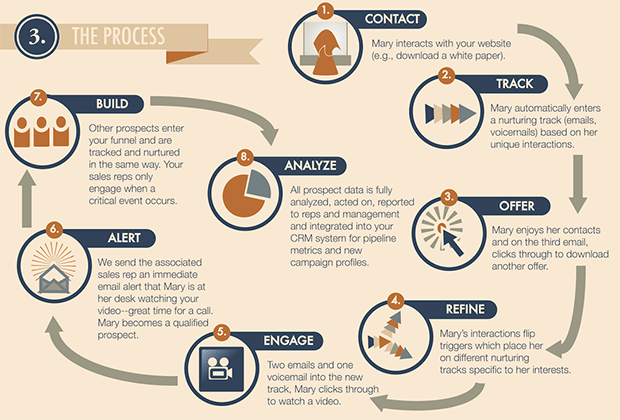- Lead generation (85%)
- Sales (84%)
- Lead Nurturing (78%)

Improve Sales Lead Management By Identifying Points of Failure
Step 1. Research is Critical
Identifying and understanding your leads is a crucial part of improving any lead management process. Before you can take any other action you need to determine who your potential buyers are, as well as your ideal customer. This will shape your lead management strategy. If you don’t leverage all of your teams, you’re going to short yourself. This is the point where you bring together your sales and marketing teams to collaborate and share information. Marketing can provide a great deal of insight into buyer types and audience segments, crafting personas to paint a picture of the ideal customer. This is usually a combination of:- Demographics: age, gender, location, career and more. This also includes their problems, needs, and wants.
- Behaviors: Data includes the type of content they digest, where they spend their time, how they shop, what kind of information they’re looking for
- Sources: Defines how your leads find you, or how you’re generating and acquiring new customers. Is it campaigns you run? Referral programs? Social activity?
Step 2. Map Your Funnel and Create a Content Plan
Research gives you terrific insight into the buyer’s journey and will help you shape the sales funnel and the path you want leads to take before reaching the conversion point. With an established funnel, you can begin mapping content to the buyer’s journey. This is the framework for your lead nurturing process, and the type of content you create will vary based on the position of the lead within the funnel. For example; content at the top of your funnel is designed for lead acquisition and will be lighter on conversion focus. Instead, this content is designed to be very high value, and answer questions to build your authority with the lead. It brings them into the funnel. Typically, this is some kind of blog post, podcast or even a video. Later in the funnel, when a lead is more tuned into your solution, the type of content shifts to something like case studies and research/white papers to support your solution. Your sales team needs this content to help support their lead nurturing, so task marketing with working parallel to sales to generate the right kind of content. I wrote a great piece on this for Kissmetrics detailing how Sales can leverage content marketing to close more sales.Step 3. Create a Lead Nurture Strategy

- Define your audience segments and their needs – know what matters to them
- Set up KPIs; what the goal or sticking point for that audience segment. Know what success looks like so you know how to drive them toward that point
- Establish a timeline for conversion
- Produce content specific to the segments
- Create email campaigns by audience segment
- Focus on offering value over everything else. Don’t push the sale
- If using direct nurturing and relationship building through social, define what that looks like; the channels, who does it, how often, etc.
Step 4. Improve Sales Lead Management with Lead Scoring
It’s not uncommon for marketers to shuffle leads along to the sales team as they come in. Some 60% of marketers simply send everything over to the sales team, when in reality only about 27% of initial leads are qualified. [clickToTweet tweet=”60% of marketers send all leads to sales but only 27% of leads are qualified. #leadmanagement @tallyfy” quote=”60% of marketers send all leads to sales but only 27% of leads are qualified.”] That can put a tremendous strain on the sales team, and it’s why lead scoring is an essential part of improving sales lead management. Potential factors for determining the lead’s score can include everything from demographics to behavior, and a good scoring system can improve the quality of the leads your sales team gets. Reduce the number of poor quality leads, and the sales team can spend more time working with those most likely to convert. The criteria used to score a lead, both positive and negative, will vary greatly from one business to another. You’ll need to establish that criteria based on your business model and what an ideal customer looks like.- Identify the qualification criteria you’ll use to score your lead
- Determine point values, including those criteria that remove points
- Establish what makes a sales-ready lead
Step 5. Passing on the Leads
This is a step where it’s easy to lose a lot of potential sales. Even with a CRM in place, it’s possible for leads to get lost in the shuffle, or passed prematurely. Having automated or approval processes in place can ensure that no leads are missed, and they only move on when specific criteria are met. When leads are passed on to sales, make it a strategic process.- Ensure scores are accurate, and the lead doesn’t need further nurturing.
- Lead data should be up to date and accurately tracked, listing all activity and the background data gathered during the nurturing process to help sales close the deal
- Sales should have a strategy for fact-checking and reviewing intelligent information before making contact. This includes: business structure, current products/services, decision makers, audience segment information and other intel that can help with developing the personal relationship
- Create guidelines for follow-up to stay on the lead’s radar throughout the nurturing, sales and conversion process
What kind of approach do you take to lead management in your company? Share your tactics with me in the comments below!



